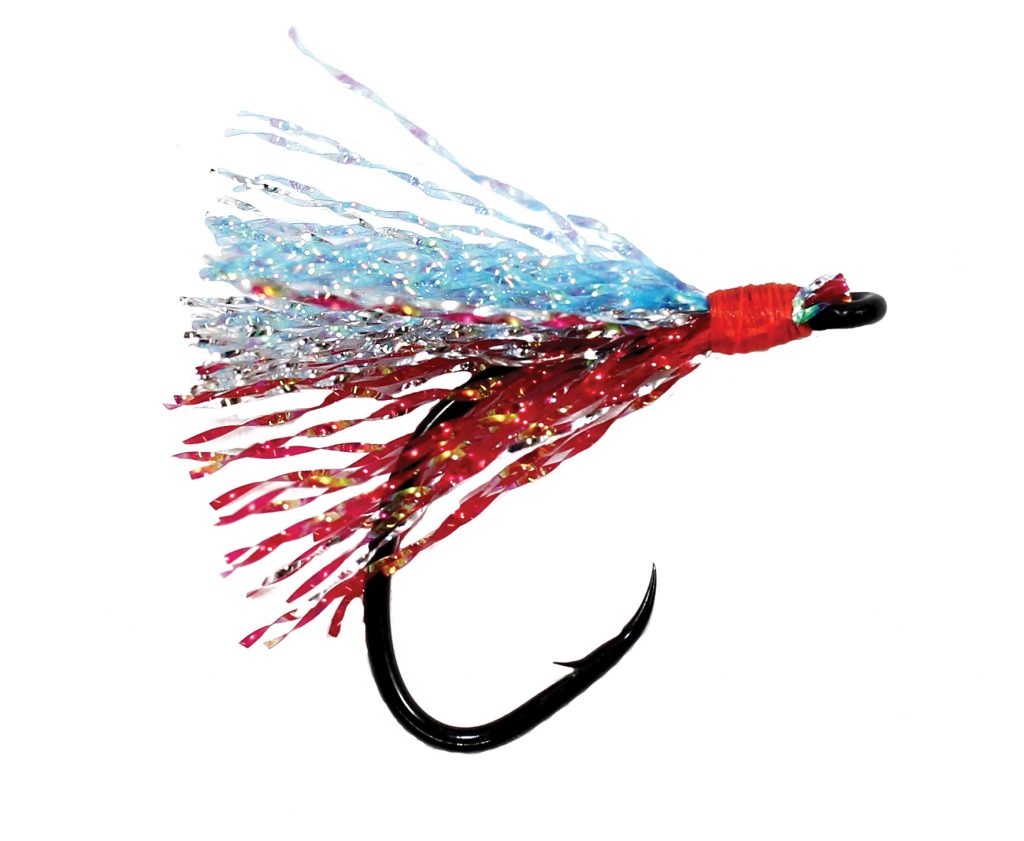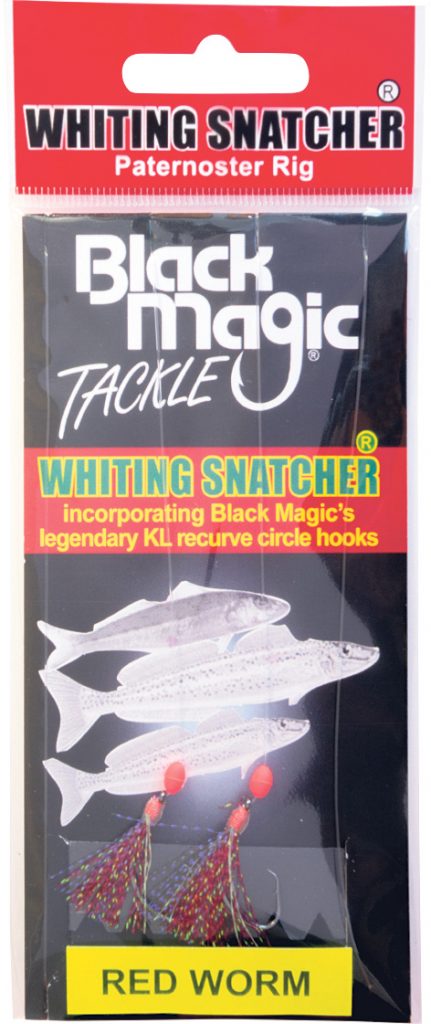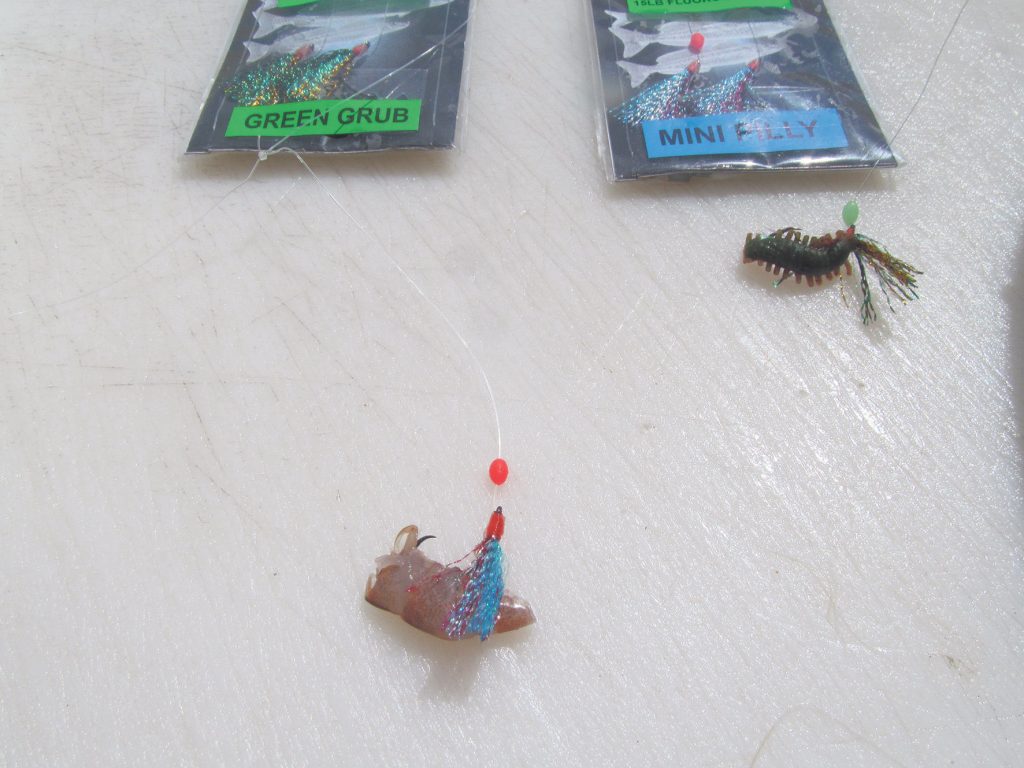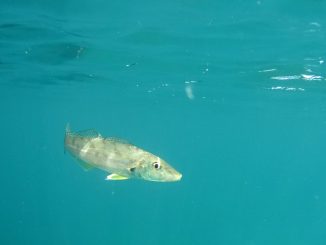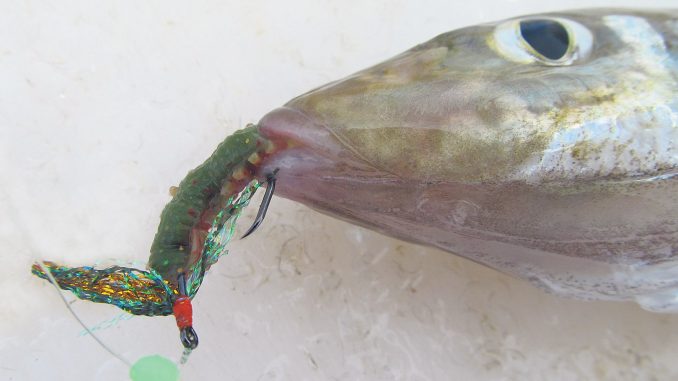
by Spero Kartanos •
Any Fishing Monthly readers who read my weekly Moreton Bay reports, would know I’m definitely an old school fisherman. A lot of us old schoolers find it hard to change the ways we have always caught fish; it’s a lot easier to stick with the kind of fishing that we know, and to keep using the tackle we have confidence in.
Recently I was asked to try out some Black Magic whiting rigs. Now, I have fished for whiting the same way for decades. I have been catching these tasty fish consistently in my local waters for many years, and haven’t changed my approach much at all in that time. I was quite sceptical about trying something new, but I thought it might be interesting just the same. So I said yes, I’d be happy to try them out.
Before long a parcel from Black Magic found its way to my doorstep. I opened it up and found some of the recurve circle KL hooks they make for whiting, and also some of their pre-made whiting rigs. Black Magic makes two different versions of whiting rigs – a paternoster rig and a running rig. Both rigs use fluorocarbon trace and Black Magic’s Japanese KL recurve hooks (a variation on the traditional circle hook). The paternoster rig is called the Whiting Snatcher, and it comes with either pink or green lumo beads for that bit of extra attraction. The running rig is called the Whiting Whacker, and it comes with red beads. Both rigs have bright tinsel to add some flash to your bait, with the choice of several different colours.
With my new rigs and hooks in hand, I set off to my whiting grounds.
PUT TO THE TEST
I didn’t take any live bait on my trip. All I brought was the Black Magic rigs, a couple of packets of Berkley Gulp Sandworms, a small packet of prawns and a bit of squid. I have to say I was not feeling too confident, but knowing the whiting were there I felt it was time to try these new ways.
To my utter surprise, the whiting loved the Black Magic rigs. I tried using a small piece of Gulp Sandworm at the tip of the recurve, and then a small piece of prawn on the hook, and both worked.
And yes, as circle/recurve hook fans would expect, all the fish were getting hooked in the side of the mouth. I have to say with this tiny hook I really expected the whiting to swallow it. However, that blurb on the packet about the hook hooking the fish on the side of the mouth was totally correct. It was a surprise to me but I was very happy to be wrong.
By the end of the session we had managed over 40 fish, using only eight Berkley Sandworms, the Black Magic whiting rigs, and seven prawns. After this experience I think it’s going to be hard to go back to long-shank red hooks and live worms and many packets of prawns! I figure why would you bother when you can catch that many fish without outlaying all that money on live bait! Even after all those fish we caught, the rigs were in excellent condition.
There were a couple of things I would change though. For my specific kind of fishing, which is chasing diver whiting in Moreton Bay, the 15lb trace is too heavy. The packet says the rig is suited for both whiting and small reef fish, which explains the heavier line, but it doesn’t suit the specific fishing I do. I re-rigged the rigs on 10lb line, and the results were significantly better fishing with that light leader and small sinkers. It wasn’t a hassle re-rigging with a different leader; I just used a blood knot and it was fine. I recommend using 8lb or 10lb for this application.
Another thing I found was that the paternoster rig was a lot more successful than a running rig. I expected this, having tried running sinker rigs in this area years ago. The problem is weed. When we used running rigs in the old days we were running our hooks through the weed. When we switched to paternoster rigs some years ago, we found the hooks sat nicely above the weed and our catch rates improved significantly. If you’re drifting and you’ve got your line 30ft to the side or back, the first hook is close to the bottom but not right on it, and the second hook is up a bit further again, so you get no weed on your hooks. The whiting are happy to come up off the bottom to eat these higher baits, so you don’t have to worry about that.
If you’re fishing the surf, however, I’m sure the running sinker rig would be the go.
The only other problem I had was that, with my fat fingers, it took me a little longer than usual to get a little bit of bait on the recurve hooks. I had trouble getting the worms to sit the way I am used to seeing on a hook. Still, it didn’t seem to matter one bit as the fish kept getting hooked. I suspect I just have to accept the idea of the baits sitting in a different way, instead of me wasting time getting them to look the way I’m used to seeing them on a traditional long-shank J hook.
RECURVE HOOKS
After my first trip I went back out again to try the Black Magic KL hooks with bait. What can I say… they worked, really well!
I tried using both worms and prawns, and found worms to be the best. It’s a bit hard to feed a prawn nicely onto the KL hooks, but the worms go on well. People used to bait fishing for whiting would know that worms can be very expensive, but I found that with these recurve hooks I was able to get away with using a shorter length of worm. On a long-shank J hook I used to use a 1” or 1.5” length of worm, but with the KL recurve hooks I had excellent results using only 0.5” of worm. That was a benefit I didn’t expect. On a subsequent trip I used even smaller pieces – only 1cm long. We ended up catching 50 whiting using only three bloodworms.
The KL hooks caught every single fish in the side of the mouth. People who chase other species with recurve/circle hooks would know that you often need to avoid striking, as it can pull the hook straight out of the fish’s mouth. You either wait for the fish to hook itself, or give a slow lift.
With these whiting, however, it didn’t matter whether you struck or not. They sucked the worms right in and hooked themselves instantly. In fact, I believe you’re more likely to pull a long-shank J hook out of a whiting’s mouth when you strike, as those hooks lie straight when they get sucked in.
All in all, I would definitely recommend giving these hooks and rigs a go – and this is coming from a fisherman who finds change a bit difficult to adapt to. The fact is that they worked.

